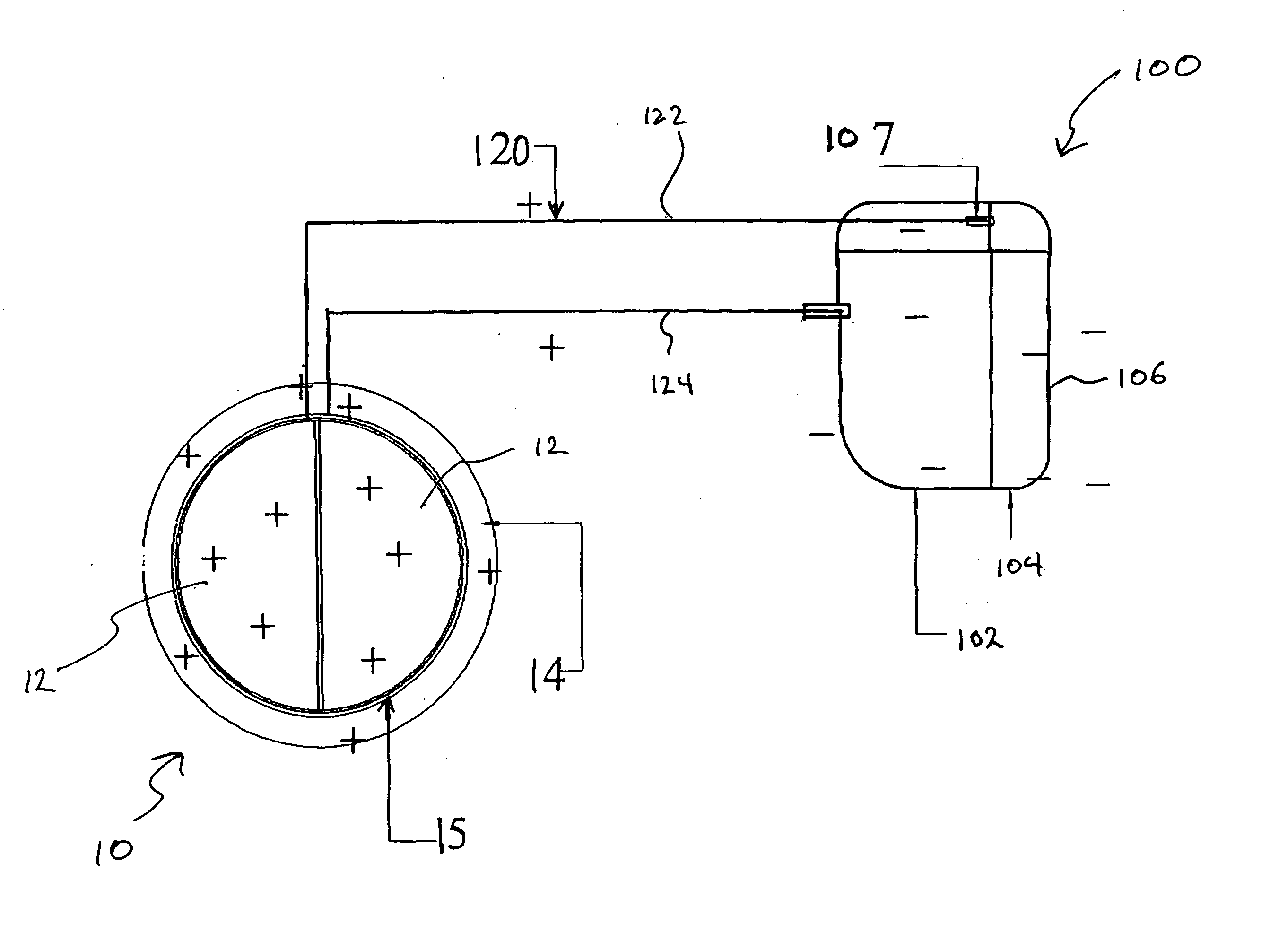Method of rendering a mechanical heart valve non-thrombogenic with an electrical device
a technology of electrical device and mechanical heart valve, which is applied in the field of mechanical devices, can solve the problems of insufficient interference with the normal beating of the heart, and achieve the effect of reducing or eliminating blood clotting
- Summary
- Abstract
- Description
- Claims
- Application Information
AI Technical Summary
Benefits of technology
Problems solved by technology
Method used
Image
Examples
Embodiment Construction
[0019] Turning now to the Drawing, where the purpose is to describe a preferred embodiment of the invention and not limit same, FIG. 1 is a schematic representation of a mechanical device and power supply according to the invention.
[0020] A device 10 according to the invention may be any mechanical device that is implanted into the body and that is susceptible to blood clotting on one or more of its surfaces to such a degree that interventional therapy is recommended to reduce or eliminate the clotting. Device 10 is preferably a heart valve, such as an aortic, tricuspid or mitral valve. Other examples of mechanical devices that may be used to practice the invention are pulmonary valves. In this embodiment, device 10 has a connective portion 11 (for receiving a connection to a power source or otherwise connecting device 10 to a power source), valve plates 12 and sewing ring 14. Device 10 can be made of any suitable materials that can be charged to prevent or alleviate blood clotting...
PUM
| Property | Measurement | Unit |
|---|---|---|
| voltage | aaaaa | aaaaa |
| voltage | aaaaa | aaaaa |
| current | aaaaa | aaaaa |
Abstract
Description
Claims
Application Information
 Login to View More
Login to View More - R&D
- Intellectual Property
- Life Sciences
- Materials
- Tech Scout
- Unparalleled Data Quality
- Higher Quality Content
- 60% Fewer Hallucinations
Browse by: Latest US Patents, China's latest patents, Technical Efficacy Thesaurus, Application Domain, Technology Topic, Popular Technical Reports.
© 2025 PatSnap. All rights reserved.Legal|Privacy policy|Modern Slavery Act Transparency Statement|Sitemap|About US| Contact US: help@patsnap.com


